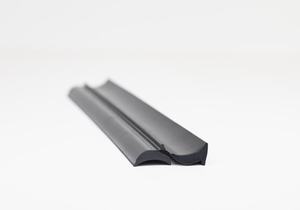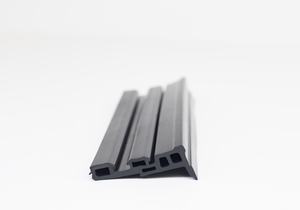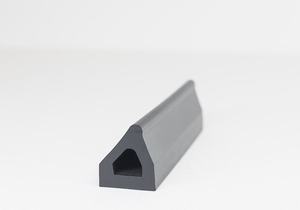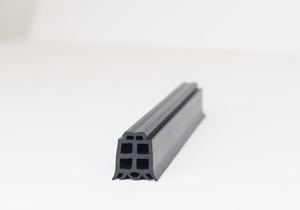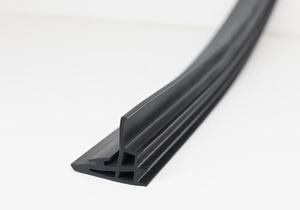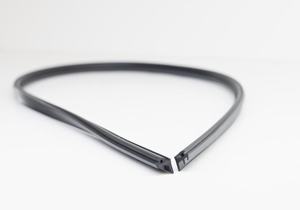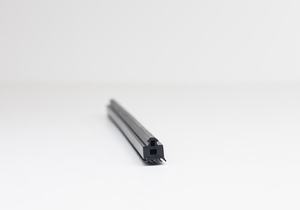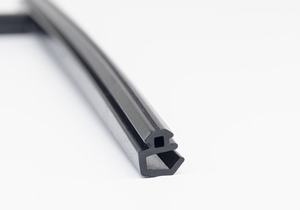Seals, particularly rubber seals, are essential components in various industries and applications, playing a critical role in preventing leaks, maintaining environmental integrity, and ensuring the efficient operation of mechanical systems. Rubber seals are widely used due to their versatility, durability, and excellent sealing properties, making them suitable for a wide range of environments and conditions.
Composition and Materials: Rubber seals are typically made from various elastomers, with synthetic rubber compounds being the most common choice. The choice of material depends on the specific application, considering factors such as temperature, pressure, chemical compatibility, and flexibility requirements. Common elastomers used for rubber seals include:
- Nitrile Rubber (NBR): Known for its excellent oil and fuel resistance, NBR is often used in automotive applications, hydraulic systems, and industrial machinery.
- Viton® (FKM): FKM rubber offers exceptional resistance to high temperatures, aggressive chemicals, and fluids. It is commonly used in aerospace, chemical processing, and automotive industries.
- EPDM (Ethylene Propylene Diene Monomer): EPDM is highly durable and resistant to weathering, ozone, and UV exposure. It’s often chosen for outdoor and automotive applications.
- Silicone Rubber: Silicone rubber is known for its excellent flexibility, high-temperature resistance, and biocompatibility. It’s used in medical devices, food-grade applications, and electrical insulation.
- Neoprene: Neoprene rubber is resistant to oils, chemicals, and weathering, making it suitable for gaskets, seals, and industrial applications.
- Natural Rubber: This rubber offers good elasticity and resilience but may not have the same chemical resistance as synthetic rubbers. It’s used in applications like tires and conveyor belts.
Applications: Rubber seals find application in a multitude of industries, including:
- Automotive: Seals are used in engines, transmissions, and various vehicle components to prevent fluid leaks and ensure proper functioning.
- Aerospace: They play a crucial role in aircraft, spacecraft, and rocket systems, providing airtight seals in extreme environments.
- Industrial Machinery: Rubber seals are used in hydraulic systems, pumps, valves, and heavy machinery to prevent leakage and maintain operational efficiency.
- Oil and Gas: In the petroleum industry, rubber seals are essential for maintaining the integrity of pipelines, valves, and drilling equipment.
- Electronics: Rubber seals are used to protect electronics from moisture, dust, and environmental contaminants.
- Medical Devices: In medical equipment and devices, rubber seals ensure hygiene and protect against contamination.
- Food and Beverage: Seals are used in food processing equipment to maintain product purity and prevent leaks.
- Construction: They are used in construction materials and equipment to prevent water and air infiltration.
- Marine: In marine applications, rubber seals are used for boat hatches, doors, and other components to prevent water ingress.
Types of Rubber Seals: Rubber seals come in various forms, including:
- O-Rings: Circular seals used in a wide range of applications, providing excellent radial sealing.
- Gaskets: Flat or profiled seals used between two surfaces to prevent leaks, often customized to fit specific applications.
- Lip Seals: Used in rotating shafts to prevent the entry of contaminants and retain lubricants.
- Diaphragms: Flexible seals that move in response to pressure changes, used in pumps, valves, and regulators.
- Bellows Seals: Designed to accommodate axial, angular, and lateral movement, making them ideal for dynamic applications.
- Custom Molded Seals: Tailored to specific applications, these seals offer precise sealing solutions.
In conclusion, rubber seals are indispensable components in various industries, ensuring the integrity and efficiency of mechanical systems while offering a wide range of material options and configurations to meet specific needs. Their versatility, durability, and reliability make them a cornerstone of modern engineering and manufacturing.
